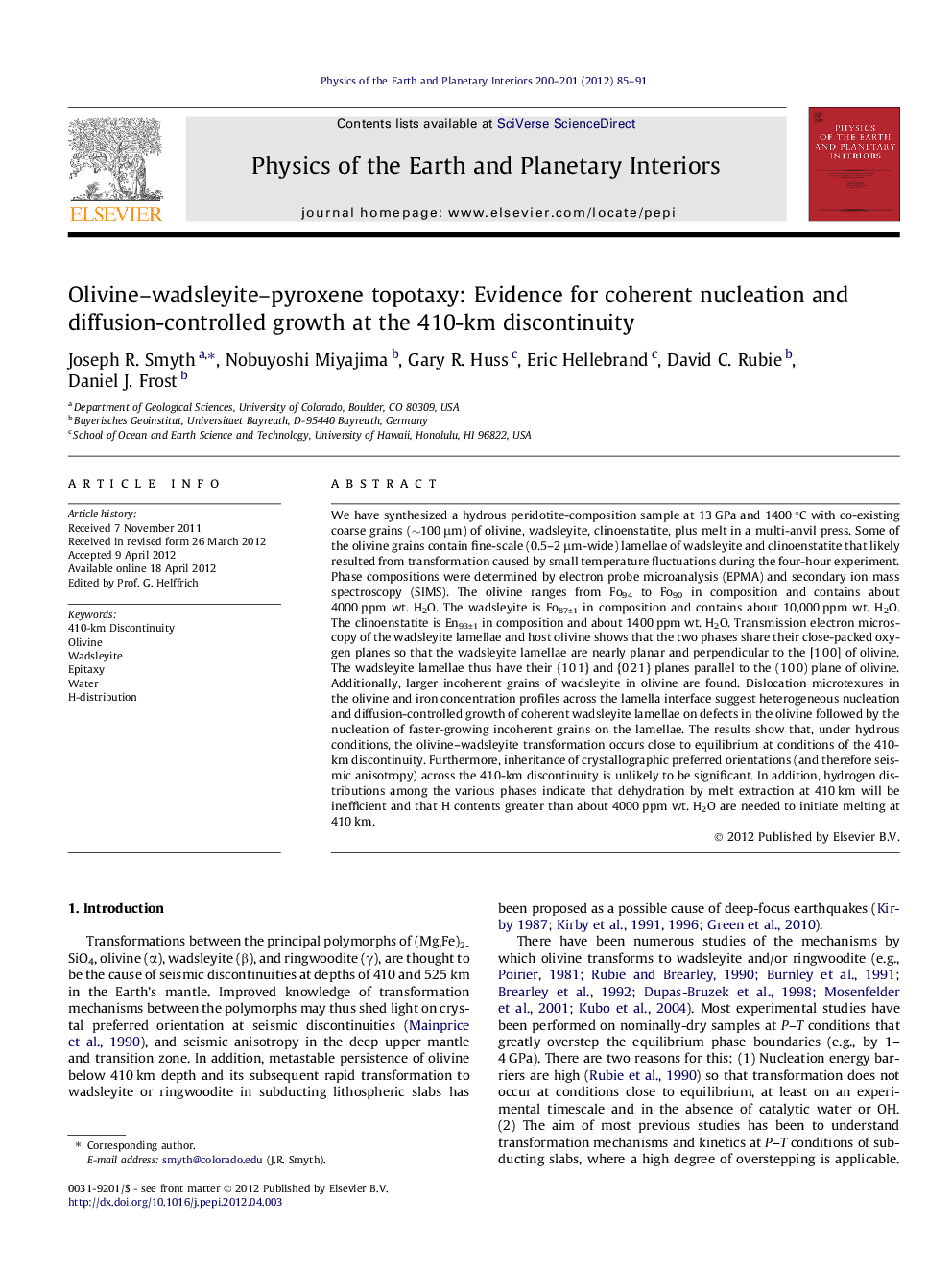| Article ID | Journal | Published Year | Pages | File Type |
|---|---|---|---|---|
| 4741832 | Physics of the Earth and Planetary Interiors | 2012 | 7 Pages |
We have synthesized a hydrous peridotite-composition sample at 13 GPa and 1400 °C with co-existing coarse grains (∼100 μm) of olivine, wadsleyite, clinoenstatite, plus melt in a multi-anvil press. Some of the olivine grains contain fine-scale (0.5–2 μm-wide) lamellae of wadsleyite and clinoenstatite that likely resulted from transformation caused by small temperature fluctuations during the four-hour experiment. Phase compositions were determined by electron probe microanalysis (EPMA) and secondary ion mass spectroscopy (SIMS). The olivine ranges from Fo94 to Fo90 in composition and contains about 4000 ppm wt. H2O. The wadsleyite is Fo87±1 in composition and contains about 10,000 ppm wt. H2O. The clinoenstatite is En93±1 in composition and about 1400 ppm wt. H2O. Transmission electron microscopy of the wadsleyite lamellae and host olivine shows that the two phases share their close-packed oxygen planes so that the wadsleyite lamellae are nearly planar and perpendicular to the [1 0 0] of olivine. The wadsleyite lamellae thus have their {1 0 1} and {0 2 1} planes parallel to the (1 0 0) plane of olivine. Additionally, larger incoherent grains of wadsleyite in olivine are found. Dislocation microtexures in the olivine and iron concentration profiles across the lamella interface suggest heterogeneous nucleation and diffusion-controlled growth of coherent wadsleyite lamellae on defects in the olivine followed by the nucleation of faster-growing incoherent grains on the lamellae. The results show that, under hydrous conditions, the olivine–wadsleyite transformation occurs close to equilibrium at conditions of the 410-km discontinuity. Furthermore, inheritance of crystallographic preferred orientations (and therefore seismic anisotropy) across the 410-km discontinuity is unlikely to be significant. In addition, hydrogen distributions among the various phases indicate that dehydration by melt extraction at 410 km will be inefficient and that H contents greater than about 4000 ppm wt. H2O are needed to initiate melting at 410 km.
► At 13 GPa and 1400 °C, olivine contains lamellae of wadsleyite and clinopyroxene. ► Wadsleyite lamellae in olivine appear to have close-packed oxygen planes in common. ► Incoherent blebs of wadsleyite are also observed and may be dominant. ► Wadsleyite, olivine, and pyroxene contain 10,000, 4000, 1500 ppm wt. H2O, respectively.
